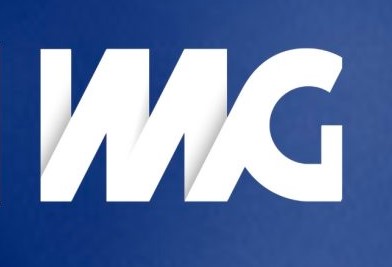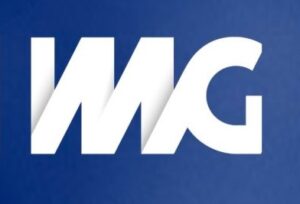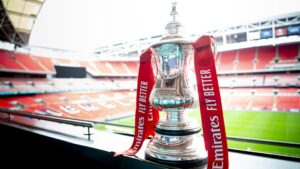The IMG gradings introduced in rugby league have certainly divided opinion. Their aim is to reward sustainable, well-run clubs rather than those relying on short-term spending, but the shift has been controversial. Supporters of the system argue it will protect the sport’s future; critics say it undermines the idea that results should always decide who goes up and who goes down.
It is difficult to imagine anything quite so radical being introduced in football. The sheer scale and cultural importance of the game make it far more complicated. Promotion and relegation are embedded into football’s DNA. Yet the principle behind the IMG model is hard to argue with. It promotes better governance, responsible ownership, and a focus on long-term planning.
So what would happen if football took a similar approach, not to decide league positions, but to set and measure standards of how clubs are run? And how might that idea fit alongside the forthcoming Independent Football Regulator, which is already tasked with raising the bar for governance and financial health?
If football ever explored its own version of the IMG model, the grading would likely rest on familiar pillars.
- Governance and Transparency
Clubs would be judged on how well they are managed, how accountable their boards are, and whether they publish meaningful information about their operations. Transparent ownership and clear decision-making structures would count for a great deal. - Financial Sustainability
This would look beyond profit and loss to examine the soundness of financial planning. Wage-to-turnover ratios, tax compliance, and avoidance of risky debt would all factor in. The intention would be to reward financial discipline rather than speculative gambling. - Facilities and Infrastructure
Stadium quality, accessibility, and ongoing maintenance would contribute to a club’s score, alongside investment in training grounds, academies, and women’s football. A club improving its environment and facilities would be recognised for it. - Fan and Community Engagement
Clubs that engage openly with supporters, run active community programmes, and reinvest in their towns or cities would be rated more highly. A functioning supporters’ trust and meaningful dialogue with fans would become signs of strength. - Player Development and Pathways
While results would still matter, clubs would also be rewarded for nurturing talent and having a clear footballing identity. A well-structured youth system would demonstrate long-term thinking rather than reliance on short-term recruitment. - Digital and Commercial Growth
In an era where visibility drives viability, the ability to grow a digital audience and attract sustainable sponsorship would count. Clubs investing in professional communications and outreach would stand out.
Where It Meets the Football Regulator
The connection between this idea and the Independent Football Regulator is obvious. The regulator’s role is to ensure that clubs are run sustainably, transparently, and with proper accountability. It will not decide league tables, but it will decide who meets the minimum standards to operate.
That, in essence, is a form of grading already. Where IMG scores clubs across a points system, the regulator will issue licences based on compliance. Both are designed to promote better behaviour, protect clubs from collapse, and prevent the kind of ownership failures that have scarred football in recent years.
The main difference is that IMG’s system is competitive, ranking clubs against each other, while the regulator’s licence is pass or fail. But there is no reason football could not introduce a more graduated model within that framework.
One of the most debated aspects of the IMG model is that on-field success forms only a small portion of the overall score. Clubs are graded out of 20 points, but performance contributes only five of those. The other fifteen are determined by areas such as finances, fandom, facilities, and governance.
That balance means that a well-run club can leapfrog one that performs better on the pitch. The recent example of Bradford Bulls proves the point. Despite finishing third in the Rugby League Championship behind York and champions Toulouse, Bradford moved into the top twelve graded clubs and automatically earned a Super League place for 2026 by playing the system better than others.
The system rewards structure and sustainability rather than recent form, and it is unapologetic about doing so.
For football, though, importing that idea wholesale would make little sense. Promotion and relegation are the heartbeat of the sport. Removing or diminishing that link would erode what makes English football so compelling. Any grading or licensing framework should therefore assess how clubs are run, not how well they play.
The performance data could still be monitored by the regulator as an indicator of stability or sudden decline, but it should never influence a club’s right to compete within the pyramid.
How the Scores Are Calculated
Each rugby league club in Super League, the Championship and League 1 is marked out of 20 points, measured over a rolling three-year period to reward consistency and discourage short-termism. The scoring breakdown is as follows:
- Fandom (5pts, 25%) – Attendance (2.5), viewership (1), digital engagement (1.5).
- Performance (5pts, 25%) – League position and cup results across three seasons. (e.g. 0.75 pts for winning Super League)
- Finances (4.5pts, 22.5%) – Income, diversity of revenue, and financial stability.
- Stadium (3pts, 15%) – Facility quality, ownership, match-day experience (e.g. screens, LED boards etc), and utilisation.
- Community (2.5pts, 12.5%) – Foundation activity, local participation, and pupulation catchment area.
To achieve Grade A, a club must score at least 15 points; Grade B requires 7.5 or higher. The rest fall into Grade C.
The IMG model also enforces minimum standards and compliance measures. Grade A and B clubs must operate a foundation, submit equality and inclusion action plans, and meet environmental sustainability benchmarks. Breaches can lead to point deductions or a downgrade in grade the following season.
Another defining feature is the data-driven nature of the model. Clubs submit verified figures for attendances, financial accounts, website traffic, and social-media metrics, often audited by the governing body. IMG sets out exactly how clubs should extract analytics from Meta Business Suite, Twitter, YouTube, TikTok and Google Analytics to ensure consistent reporting.
It is a meticulous, evidence-based process that rewards professionalism and transparency. If football adopted a similar approach, it would provide the Independent Regulator with a more complete picture of each club’s health over time. A rolling, data-verified approach would highlight trends rather than snapshots and allow early intervention before crises develop.
Licensing Grades: A, B and C
A licensing system built on clear, tiered grades would encourage ambition as well as compliance.
- Grade A: Exemplary governance, transparent ownership, strong community integration, sound finances, and a clear long-term plan.
- Grade B: Broadly compliant but with areas for improvement. Financially sound but not yet strategic or transparent enough to meet the highest standard.
- Grade C: Meets the minimum standards required to compete but with notable weaknesses that must be addressed.
Every professional club from the Premier League down to the National League could be required to hold at least a C-grade licence to compete within the top five tiers. It would not alter promotion or relegation, but it would determine who is fit to operate.
The real strength of such a system lies in the incentives. At present, the test for ownership is binary: pass and you can run a club; fail and you cannot. A graded model would turn good practice into a target worth reaching.
Clubs holding an A licence could gain access to specific advantages such as:
- Eligibility for central or matched funding for infrastructure and community projects
- Eligibility for FA or government-backed grants supporting youth and women’s football
- Reduced audit frequency, recognising earned trust through compliance
- Greater investor and sponsor confidence, as public grades would highlight low-risk, professionally run organisations
The key is transparency. Publishing the scores behind the grades would allow every club to see where it stands and how far it has to go. A club might be compliant enough to hold a C licence, but seeing that it sits just a few points below a B would create a clear roadmap for improvement.
Under IMG, all A-grade clubs compete in Super League. Football could follow that principle only insofar as every club with a C licence could continue to compete across the pyramid, but the publication of those scores would reveal the difference between simply surviving and truly excelling.
It would not replace sporting merit. Instead, it would reward responsible stewardship, providing a visible measure of professionalism and ambition.
Rugby league’s grading system is not perfect, but it has forced clubs to think beyond the next fixture. It has introduced a sense of accountability to off-field decision-making. Football’s regulator aims to achieve the same outcome through licensing, but an A–C grading model could take that principle further by giving supporters, sponsors, and governing bodies a shared understanding of what well run actually looks like.
It would also provide valuable insight at national level. A pattern of clubs consistently rated C, for instance, would show where the sport’s structural weaknesses lie. Conversely, a rising number of A-graded clubs would signal genuine improvement across the game.
The Southport Context
For Southport supporters, the thought exercise is particularly relevant. The club’s new ownership has spoken openly about rebuilding from the ground up, putting structure, stability, and communication at the heart of its plan. Those values are exactly what an IMG-style grading system would reward.
Financial stability and transparent governance would score strongly. Continued investment in facilities, women’s football, digital presence, and youth pathways would enhance that position further.
An A licence would not guarantee promotion, but it would signify something equally meaningful: that Southport FC is being run to a professional standard, built on responsibility and trust, and capable of growing sustainably.
Whether football ever moves to a formal grading model or not, the conversation is worth having. The Independent Football Regulator will already bring new standards to the game. Turning that framework into a transparent, tiered licensing system could transform governance from an afterthought into something meaningful.
So perhaps the question for supporters is this: if your club were graded tomorrow, how would it fare?
For Southport, the early signs suggest the club would be heading firmly in the right direction.
Disclaimer: This article is an independent opinion piece published by Southport Central. The views expressed are those of the author and do not necessarily reflect those of Southport FC or any governing body. All factual references to IMG’s grading model are taken from official RFL and BBC documentation current as of October 2025.
Further Reading
- Rugby Football League – Grading Criteria Handbook (June 2023).
- BBC Sport: What are IMG gradings and how do they work? (October 2025).
- UK Government: Independent Football Regulator White Paper (2024).
Discover more from Southport Central
Subscribe to get the latest posts sent to your email.

 1 - 1 v Chorley (H) 21/10/2025
1 - 1 v Chorley (H) 21/10/2025 




More Stories
Tony Rhodes (1946-2024)
Happy 99th Birthday to Trevor Hitchen
Keith Paterson Steps Down as Southport FC Women’s Manager